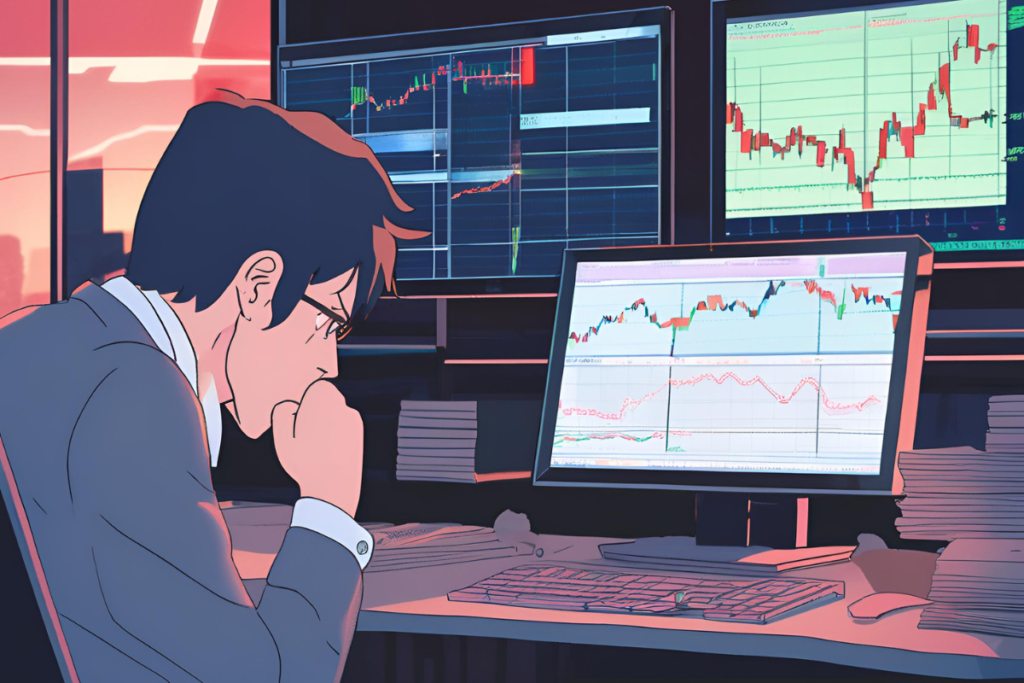Ever wondered how to stop blowing up your trading account? I’ve been there, and it ain’t fun. Trading can be an exhilarating and potentially lucrative endeavor, but it’s not without its risks. One of the most devastating outcomes for any trader is blowing up their trading account. This catastrophic event can wipe out months or even years of hard work and savings in the blink of an eye. But don’t worry! With the right knowledge and strategies, you can protect yourself from this financial disaster. Let’s dive into the world of trading account blow-ups and learn how to keep your investments safe.
What is a Trading Account Blow-Up?
Before we jump into prevention strategies, let’s get crystal clear on what we’re talking about. Blowing Up Your Trading Account occurs when you loss a significant portion or all of their capital due to poor risk management or a series of bad trades. It’s like watching your financial house of cards come tumbling down – not pretty!
Here’s a quick breakdown of what a blow-up might look like:
- Moderate blowing up your trading account: Losing 50-70% of your account
- Severe blowing up your trading account: Losing 70-90% of your account
- Complete blowing up your trading account: Losing 90-100% of your account
Trust me, you don’t want to experience any of these scenarios. They’re not just financially painful – they can be emotionally devastating too.
Common Mistakes That Lead Blowing Up Your Trading Account
Now that we know what we’re up against, let’s look at the usual suspects behind these financial fiascos. Avoiding these pitfalls is your first line of defense against blowing up your trading account.
- Over-leveraging: This is the big one, folks. It’s like trying to lift a car with a jack made of toothpicks – it’s just not going to end well.
- Emotional trading: Ever made a decision when you were really angry or super excited? Now imagine doing that with your life savings. Yikes!
- Lack of risk management: This is like skydiving without a parachute. Sure, the fall might be thrilling, but the landing? Not so much.
- Poor market analysis: Trading without proper research is like trying to navigate a minefield blindfolded. You might get lucky once or twice, but eventually, boom!
- Inadequate education: Would you try to perform surgery after watching a few YouTube videos? Probably not. So why would you risk your hard-earned cash without proper training?
Let’s dig deeper into each of these mistakes and learn how to avoid them.

Over-Leveraging: The Silent Account Killer
Leverage is like fire – it can cook your food or burn down your house. It all depends on how you use it. When you’re over-leveraged, even a small market movement against you can wipe out your entire account.
Here’s a simple table to illustrate the dangers of over-leveraging:
| Leverage | Initial Investment | Position Size | 2% Market Move Against You |
|---|---|---|---|
| 1:1 | $10,000 | $10,000 | $200 loss (2% of account) |
| 10:1 | $10,000 | $100,000 | $2,000 loss (20% of account) |
| 50:1 | $10,000 | $500,000 | $10,000 loss (100% of account) |
As you can see, high leverage can amplify your losses just as much as your gains. To avoid this trap:
- Start with low leverage (1:1 or 2:1) until you’re consistently profitable
- Never risk more than 1-2% of your account on a single trade
- Use stop-loss orders to limit potential losses
Remember, the goal is to stay in the game long enough to become profitable. You can’t do that if you blow up your account in the first week!
Our Professional Traders Can help you manage your forex Account
Emotional Trading: Your Worst Enemy
We’re all human, and emotions are part of the package. But when it comes to trading, emotions can be your worst enemy. Fear and greed are particularly dangerous – they can cloud your judgment and lead to impulsive decisions.
Here are some tips to keep your emotions in check:
- Develop a trading plan: This is your roadmap. Stick to it no matter what your gut is telling you.
- Use a trading journal: Track your trades and your emotions. This can help you identify patterns and improve your decision-making.
- Practice mindfulness: Techniques like meditation can help you stay calm and focused during market volatility.
- Take breaks: Step away from the screen if you’re feeling overwhelmed. A clear head makes better decisions.
Remember, successful trading is about consistency, not big wins. Don’t let your emotions trick you into taking unnecessary risks.
Risk Management: Your Financial Lifejacket
If leverage is the silent account killer, risk management is your financial lifejacket. It’s what keeps you afloat when the market gets choppy. Two key components of risk management are stop-loss orders and position sizing.
Understanding Stop-Loss Orders
A stop-loss order is like a safety net for your trades. It automatically closes your position if the market moves against you by a certain amount. Here’s how to use them effectively:
- Set your stop-loss based on technical levels, not arbitrary numbers
- Don’t set it too close to your entry point – give your trade room to breathe
- Never move your stop-loss to a less favorable position
Proper Position Sizing Techniques
Position sizing is all about deciding how much to risk on each trade. A good rule of thumb is the 1% rule – never risk more than 1% of your account on a single trade. Here’s an example:
If you have a $10,000 account, you should never risk more than $100 on a single trade. If your stop-loss is 50 pips away, your position size should be 2 mini lots or 20,000 units.
By limiting your risk on each trade, you ensure that no single loss can end up blowing Up Your Trading Account
Poor Market Analysis & Research: The Road to Ruin
Trading without proper analysis is like driving with your eyes closed. You might get lucky for a while, but eventually, you’re going to crash. Both technical and fundamental analysis have their place in a trader’s toolkit.
Technical Analysis
Technical analysis involves studying price charts and using indicators to predict future price movements. Some popular technical analysis tools include:
- Moving averages
- Relative Strength Index (RSI)
- Fibonacci retracements
- Candlestick patterns
Fundamental Analysis
Fundamental analysis looks at economic factors that might influence a currency’s value. This includes:
- Interest rates
- GDP growth
- Inflation rates
- Political stability
The key is to use a combination of both technical and fundamental analysis to make informed trading decisions. Don’t rely on just one approach – that’s like trying to cut a steak with only a fork!

Inadequate Education & Training: Knowledge is Power
Would you try to fly a plane without proper training? Of course not! So why would you risk your hard-earned money in the forex market without adequate education?
Here are some ways to boost your trading knowledge:
- Online courses: Platforms like LuxFunded offer comprehensive trading courses for beginners and advanced traders alike.
- Trading books: Authors like Alexander Elder and Mark Douglas have written excellent books on trading psychology and strategy.
- Webinars and seminars: Many brokers offer free educational webinars. Attend as many as you can!
- Practice accounts: Use a demo account to practice your strategies without risking real money.
Remember, education is an ongoing process. The market is always evolving, and so should your knowledge.
Our Professional Traders Can help you manage your forex Account
Lack of Discipline & Patience: The Virtues of Successful Traders
Trading is not a get-rich-quick scheme. It requires discipline, patience, and a long-term perspective. Here’s how to cultivate these qualities:
- Create a trading plan: This should include your goals, risk tolerance, and specific strategies for entering and exiting trades.
- Stick to your plan: Don’t deviate from your plan just because you have a “feeling” about a trade.
- Be patient: Good trading opportunities don’t come along every day. Sometimes, the best trade is no trade at all.
- Keep a trading journal: Record all your trades, including your reasons for entering and exiting. This can help you identify patterns and improve your strategy.
Remember, consistency is key in trading. It’s better to make small, steady profits than to swing for the fences and risk blowing up your account.

